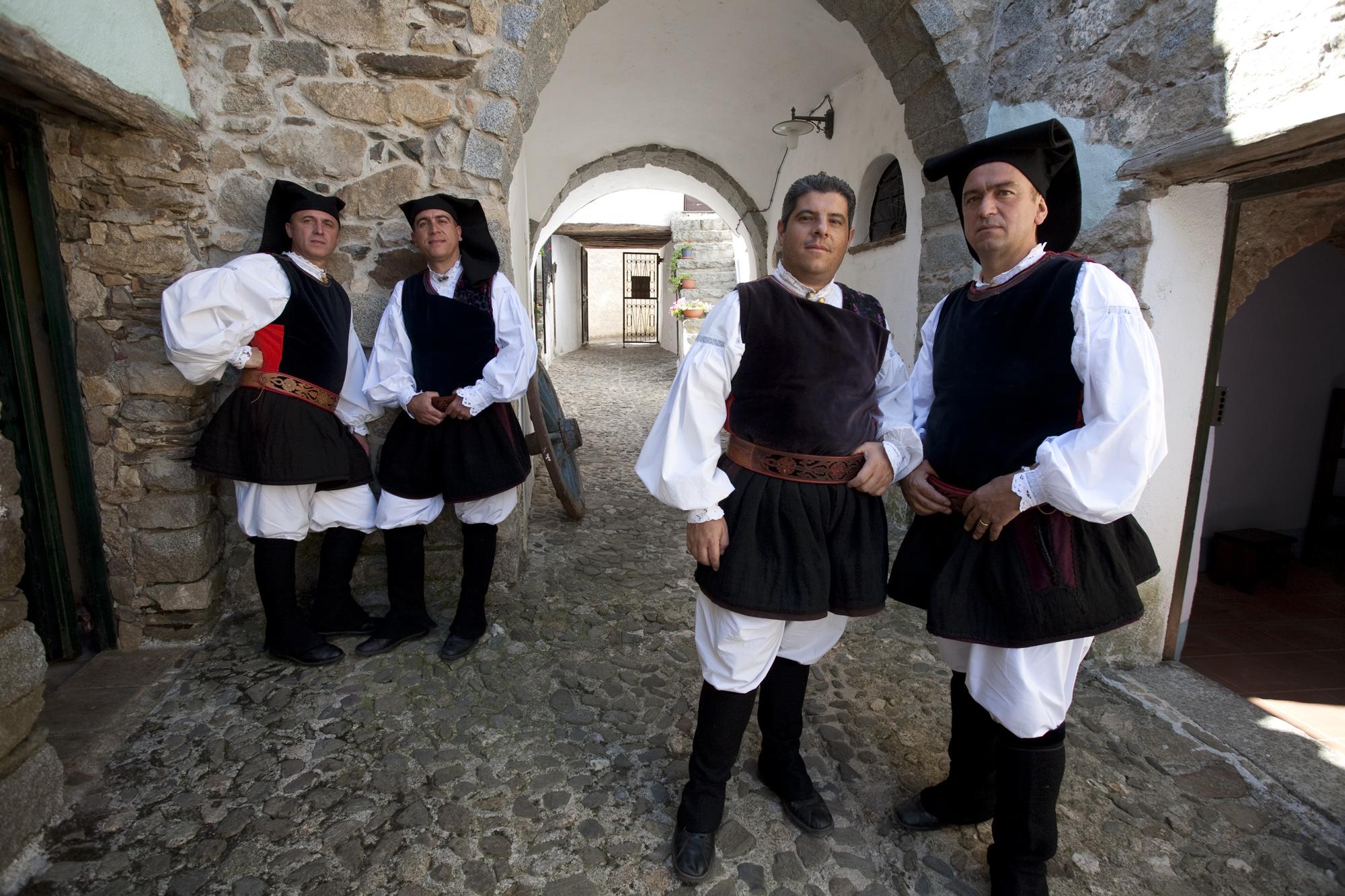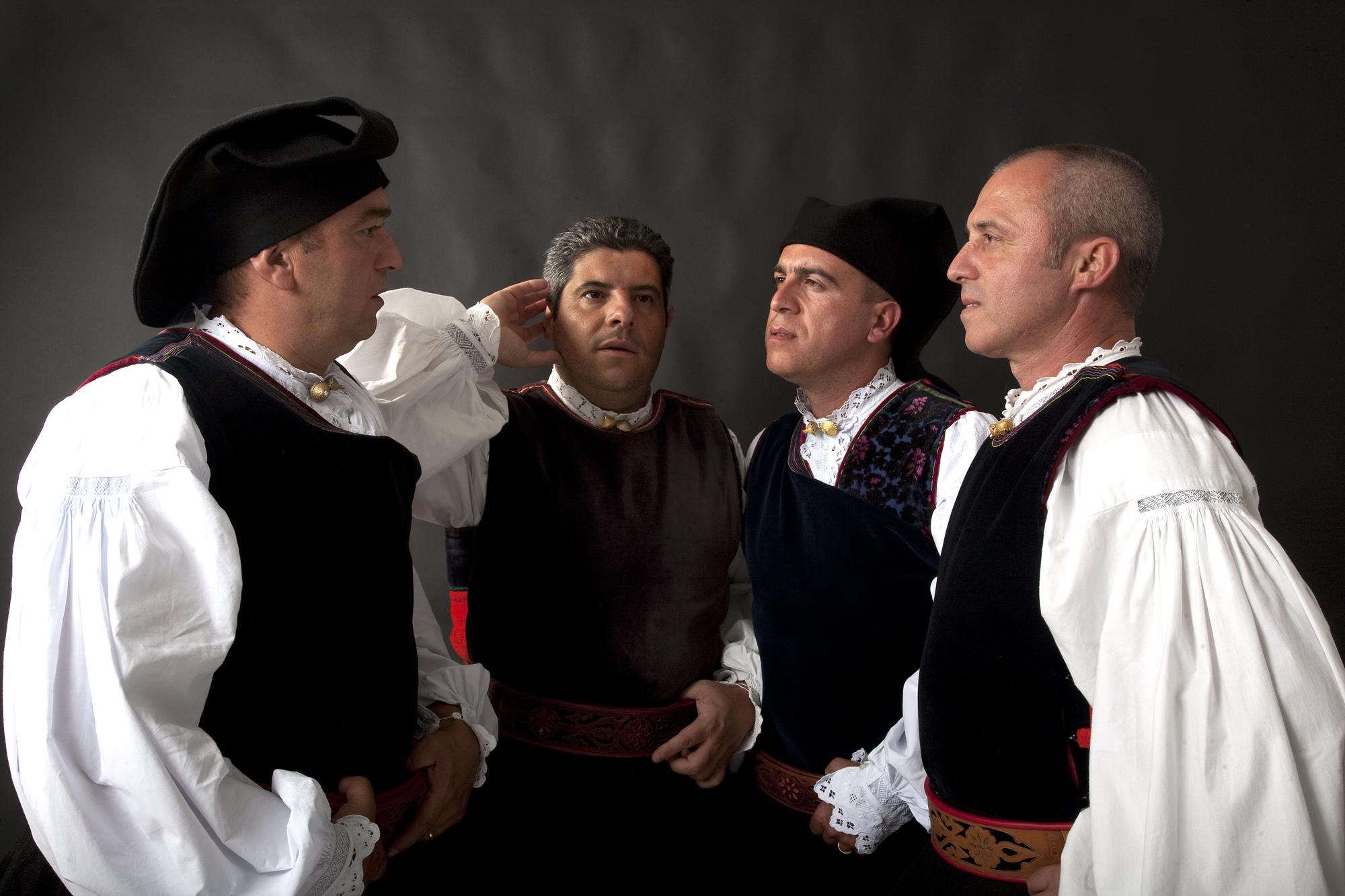Bitti is home to the first Sardinian museum of “a tenore” singing, in the ancient neighbourhood of Monte Mannu, in a typical local house with wooden plank floors “a taulatu,” and ceiling with juniper beams and reed mats.
The museum has a music library documenting the best-known Sardinian folk singing groups. Its aim is to study and promote the various “a tenore” singing traditions on the island, as well as to organise conferences on Sardinian and Mediterranean folk singing. It is a major study centre on polyphony in central Sardinia, and cooperates with other countries with an enduring folk singing tradition. It is also a research and information centre for scholars, researchers, groups of singers, aficionados and visitors. The “canto a tenore” is the most ancient musical expression of Central Sardinia. It is sung by four singers, each with a distinct role: “bassu” (bass), “contra” (contralto), “mesu oche” (mezza voce), e “oche” (voce), who sing standing in a circle.
The origin of tenore singing is shrouded in mystery: some think it dates back to the time when shepherds led solitary lives in the countryside, in close touch with their flocks and herds and with nature: so “sa contra” is thought to imitate the bleating of the sheep, “su bassu” the lowing of cattle, and “sa mesu oche” the sound of wind. The museum is one of a kind: it is made more involving by innovative technology. For instance, the “tenores” area has four totems, each with monitor and sound system, arranged in a circle just like the “tenores” during their performances: visitors can activate the totems and interact with these virtual singers. The four voices are synchronised with each other, but can also be heard separately, so as to perceive their individual contribution to the overall polyphony. Music from various areas of the island can be heard. There is also an area with videos, where visitors can select sounds and images, again perfectly synchronised.
Omar Bandinu, the Bassu (low) singer of the renowned vocal ensemble Tenores di Bitti Mialinu Pira is a unique figure of the Sardinian culture. The musical style of "Canto a Tenores" is a part of Unesco's intangible treasures of humanity and his group is the main ambassador of this musical style, defined also as a pure polyphony of timbres. Omar is also a talented piano player, a musicologist, an electronic musician and an eager researcher of the Sardinian culture. With Omar we speak always in two levels—in the traditional context and in the universal level of creativity.
The group was born in Sardinia and takes its name from the well-known anthropologist Michelangelo “Mialinu” Pira from Bitti. All the members have been learning the traditional singing since they were children.
After a careful preparation the group began to perform the ancient melody in many squares, theatres and churches of Sardinia, Italy and abroad: Germany, Denmark, France, Canada, Dubai (Emirates A.U.; the performance was successfully broadcast by Abu Dhabi TV), Norway (Trondheim: international Olavsfestdagene, broadcast by the national radio), Czech Republic, Spain (with Hevia), Belgium, Nederland. The Tenores di Bitti “Mialinu Pira” performed their first record “Su monte’e mesus.” It is also remarkable their participation to the Christmas Concert for the Pope on December 2001 with artists as Hevia, Terence Trent-Darby, Cranberries, Randy Crawford.
The group works carefully for the preservation of this tradition by keeping courses in the school (on 1999 they have kept a Regional course for Tenores Singers) and trying to merge this traditional singing with other genres of music as classical, on theatres…
Directly from the heartland of Sardinia, the city of Bitti in the region of Barbagia, known for its polyphonic singing—which many experts find one of the most expressive forms of singing, the highest peak of vocal art—come Tenores di Bitti "Mialinu Pira," which is the nickname and the surname of the famous anthropologist Michelangelo Pira. When one hears the songs for the first time they might seem primitive and hard, like a voyage in the prehistoric age, when people imitated the sounds of nature. However, four man voices—one of which chants the main melody and the other three accompany it in rhythmic pronunciation of syllables—together with the guttural emission of the voice which remind us of the primitive vocal music from Oceania and Africa, one achieves an unusual harmony and a pleasant singing.
A group of youths from Nuoro (Sardinia, Italy) keen on choral singing decided, in the by now far 1987, to create the 6th chorus in the city of Nuoro with the collaboration of Banneddu Ruiu, who is still recognized as one of the greatest maestros not only in Nuoro, but in all of Sardinia.
Maestro Ruiu was the first ever to give full meaning to traditional songs and to realize the first compositions of classical music of popular inspiration. Still now, the recording made with the Coro Barbagia in 1966, entitled “Sardegna Canta e Prega” (Sardinia Sing and Pray), is remembered as one of the best, if not the absolute best recording ever made by Sardinian choruses and choruses from Nuoro in particular.
Initially the chosen name of the chorus was “Coro Folk Polifonico di Banneddu Ruiu”, which was then changed in 1990 to the actual Associazione Culturale Coro Grazia Deledda.
The decision to pay homage with their name to the most important figure of all time of the culture of Nuoro, the Nobel Prize for Literature in 1926 Grazia Deledda, is not merely a symbolic one.
Since its early years in fact, the Association developed the research and study of cultural traditions, with particular attention to the preservation and spreading of the language and customs.
The first performance of the chorus took place on 8 June 1988 in one of the most suggestive venues: the Teatro Eliseo in Nuoro. The large audience present expressed its appreciation: the Chorus was officially born!





